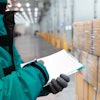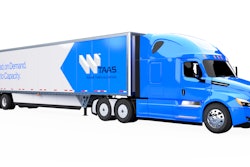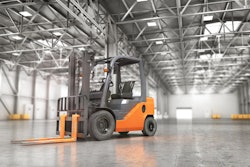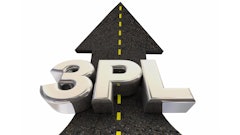
Disruption is a buzzword with heavy significance. It's always happening, like a row of dominoes across industries, leading to shortages that impact businesses and consumers alike. For example, the 2024 State of Logistics Report, produced annually for the Council of Supply Chain Management Professionals (CSCMP) by Kearney and presented by Penske Logistics, shows that U.S. supply chains pressured by global economic volatility, including inflation, climate change and geopolitical conflicts, are enhancing their capabilities to accelerate resilience, agility and flexibility to navigate current and future disruption.
In the cold chain, third-party logistics (3PL) providers have gained traction as vital partners in helping companies navigate the ups and downs of the supply chain rollercoaster.
Current disruptions
The pandemic might be the first thing you associate with the word disruption, but the nuance and unpredictability of the world can turn any situation into a disruption depending on the severity and aftermath. Key among these are pandemic-related challenges, geopolitical tension, transportation bottlenecks and unavoidable natural disasters.
The COVID-19 pandemic caused unprecedented disruptions, including factory shutdowns, labor shortages and shifts in consumer demand. These impacts are still reverberating through the supply chain. U.S. business logistics costs is $2.3 trillion, which translates to 8.7% of the national GDP.
 Clouds indicating a weather event.1xpert/stock.adobe.com
Clouds indicating a weather event.1xpert/stock.adobe.com
Trade wars, tariffs and political instability in key manufacturing regions have led to delays and increased costs for raw materials and finished goods. Regulations, UFLPA and Canada's Modern Slavery Act for example, require restructuring to meet requirements, specific to 3PLs working cross-border.
Congestion at major ports, a shortage of shipping containers and delays in trucking and rail transport have slowed the movement of goods, causing significant backlogs. The Baltimore bridge collapse early this year is a warning for 3PLs to be prepared in the wake of unknown pitfalls that might disrupt ocean ports at the start.
Events such as hurricanes, earthquakes and wildfires have disrupted production and logistics in affected areas, adding further strain to the supply chain. With hurricane Beryl recently impacting those ports in its wake, the options for devastation across the supply chain is every looming in the unpredictability of natural disasters.
The economics factor
As these disruptions continue the hot topic of "freight recession" is ever present. Last year, the term took on meaning as a reaction to the transportation industry's surge in demand as the global economy adapted to changes post-COVID. The world and the economy, in natural suit, continue to evolve.
Andy Dyer, president of transportation management for AFS Logistics, details why we're still plagued with a freight market characterized by a recent period of volatility and uncertainty.
 Representation of technology connection across the globe.DK_2020/stock.adobe.com
Representation of technology connection across the globe.DK_2020/stock.adobe.com
When it comes to food and beverage specifically, growth predictions for the industry are notoriously tricky, with unpredictable weather conditions disrupting even the most cautiously crafted outlook. A report by Atradius finds that businesses should now anticipate that global food and beverage production will increase 3.2% this year, followed by 3.3% in 2025. Further, disinflation will reduce costs for producers and boost support for consumer spending, especially for less essential and luxury food items.
Selma Rossato, team leader of Atradius Risk Services in São Paulo, Brazil, says following nearly four years of significant economic disruption led by the pandemic, supply chain challenges, labor shortages and a period of severe inflation, there are signs the North American food and beverage market may be returning to a more stable environment. And that's at least one positive outlook for the cold chain.
Technology: blessing and a curse
On-demand logistics platforms and last-mile delivery innovations have skyrocketed, meeting those evolving needs of consumers and businesses, but how this impacted traditional supply chain models and disruptions?
"The single biggest impact is an increase in velocity. From a transporter’s view, velocity and tempo have increased by orders of magnitude with the proliferation of those platforms and technologies. Over time, the industry has moved from basically stocking positions to fulfilling discrete orders on demand, which means the day-to-day tempo of operations has increased dramatically. While planning horizons used to be days and weeks long in decades past, now those horizons are minutes and hours long," says Dyer. That means any disruption is even more catastrophic than before, and it's felt much faster through the entire supply chain.
Technology shaping the space is not a flawless option. Cybersecurity is the new concern, with data piracy on the rise.
According to Chris Hughes, chief security advisor at Endor Labs and cyber innovation fellow at the U.S. government’s Cybersecurity Infrastructure and Security Agency (CISA), attackers continue to realize it is far more effective to attack a single software supplier on the proprietary front or widely used open-source software (OSS) library than targeting individual organizations. Being aware of the products you use and the safeguards in place to keep proprietary information safe is paramount for shippers looking to get ahead.
5 ways 3PLs impact shortages and disruptions
 Trucks await loading.Houssam/stock.adobe.com
Trucks await loading.Houssam/stock.adobe.com
1. Offering flexible and scalable solutions, allowing businesses to quickly adapt to changing conditions without the need for significant capital investment in infrastructure and personnel.
2. Optimizing supply chain operations with the help of technology to improve inventory management and enhance visibility across the supply chain, even anticipating disruptions and mitigating their impact.
3. Utilizing a network of warehouses, transportation assets and partners as a tool to navigate international challenges, especially regulations, more effectively.
4. Assisting in businesses development and using risk management strategies like contingency planning and alternative sourcing to minimize the impact of disruptions.
5. Consolidating to reduce transportation and warehousing costs, freeing up resources for investments in other areas, ultimately decreasing costs and ramping up efficiency.
The supply chain disruptions of today are varied and specific at the same time. Partnerships with 3PLs can enhance resiliency and operational continuity no matter the disruption, so long as the 3PL has made those factors the biggest priority.
In a future of volatility, 3PL services could become crucial in overcoming or mitigating the obstacles of logistics.




















